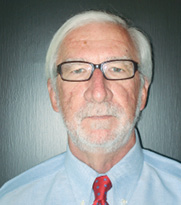Part 1 • Part 2 • Part 3 • Part 4 • Part 5 • Part 6 • Part 7
Dealers and sales managers planning for the long haul would be prudent to continuously monitor a series of metrics that could portend success or failure for their sales department. The Oxford dictionary defines a metric as “a set of figures or statistics that measure results.” This article, and several to follow, will address those metrics that will have the most significant impact on the sales department in an equipment dealership.
The first metric that should be monitored by any dealer and/or sales manager interested in improving dealership cash flow and long-term prosperity is the wholegoods sales mix.
Calculated by dividing the new and used equipment sales by the total dealership sales, this number should be less than 70%, and would ideally be approximately 60%. Sadly, this is not the case.
Between 2000 and 2011, the average equipment dealer in North America had an average wholegoods sales mix equal to 74.11%, while the last 3 years, that is 2009-2011, saw that mix increase to 75.15%, with 2011 reaching a decade long high of 77.59%.
Thus, the cash cow of the equipment business, i.e., parts and service sales, as a percent of total dealership sales, have been declining over the years and accounted for less than 22.5% of the average dealership’s total sales during 2011. This is a recipe for disaster. Or stated another way, dealerships with a high wholegoods sales mix are literally selling themselves into bankruptcy.
A dealership’s wholegoods sales mix is basically a manifestation of the dealer’s philosophy; or a function of dealer discipline; or a product of resistance to change; or a triumph of customer demand over marketing efforts; or a drive toward market share rather than profit leadership; or a combination of all of the above.
As I have written elsewhere, there are only two ways to correct an out of balance wholegoods sales mix. Either fewer wholegoods need to be sold relative to the existing parts and service sales; or, parts and service sales must increase relative to the existing wholegood sales.
While the first alternative is by far the easiest, such an approach will incur the wrath of the manufacturing gods whose primary objective for their dealers is to increase market share.
Several years ago, I was retained by a dealership that had ramped up their wholegood sales from $15 million to $63 million in less than 4 years. Its wholegoods sales mix hovered around 90%, and, parenthetically, had a used equipment turnover of less than 1.75.
Their manufacturer had bestowed upon them two plaques, one for being the number 1 combine dealer, and another for being the number 1 dealer for a certain line of tractors. The acceptance of these plaques should have been the first clue that “trouble was a brewing.”
The only problem with this dealership’s rapid growth was that they had absolutely no cash. None!
I told them that to survive they would have to immediately shut down new sales and concentrate on purging the plethora of used equipment that they had accumulated while pursuing their market share goals.
About two months into this plan, I received a phone call from the manufacturer’s regional manager asking what could be done to get this dealer to once again start selling more new equipment, as his bonus was tied to his dealerships new retail sales. Since this is a family magazine, I will refrain from reiterating my response.
Dealers with a high wholegoods sales mix will inevitably have below average profitability and a below average absorption rate, unless their total dealership expenses are significantly lower than those associated with the average dealer.
Similarly, dealers with a high wholegoods sales mix will also generally have poor cash flow unless they also have a used equipment turnover that is significantly higher than the average dealer. On the other hand, dealers with a low wholegoods sales mix will almost always have a higher bottom line as well as a significantly higher absorption rate than dealers who focus their energies and marketing dollars on low margin wholegood sales.
Now, please understand, I’m not suggesting that every dealer immediately stop selling equipment just to get their wholegoods sales mix in line.
But what I am advocating is that every dealer monitor their wholegoods sales mix and establish a realistic, 1-, 3- and 5-year plan for where they would like to envision their wholegoods sales mix percentage. Again, no dealer should have a wholegoods sales mix higher than 75%, and realistically, that number should be less than 70%.
The wholegoods sales mix is one of the most important metrics for assessing a dealership’s level of profitability and cash flow. Modifying this mix is not easy and to do so requires focus, discipline and courage. And, as Andrew Jackson supposedly once stated, “One man with courage makes a majority.”






